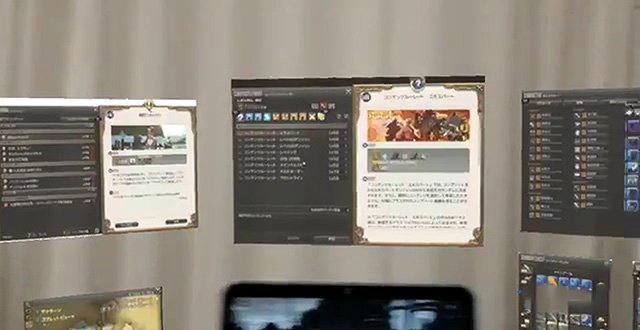Augmented reality is very conceptual in nature, and the imagination of the potential application of this technology is almost endless. In a conceptual video that has flowed out recently, developers have combined HoloLens and Final Fantasy 14 to show how useful AR is as a "second screen" for games and other areas.
Although we hope that future AR games can be completely based on augmented reality, today’s reality is that most users’ homes have a high-resolution high-end display, as well as a powerful computer or host connected to it, which can support various games and content. Before the arrival of true augmented reality, especially because the current AR display technology and content design are still in the development stage, using these screens will be a good complement.

Since smartphones have become mainstream in the past 10 years, the concept of "second screen" that puts complementary content related to home screen content on mobile devices has emerged. We have seen similar attempts at games and movie/television content over the past few years, but have never been listed as truly useful designs. However, AR may change this.
On Twitter user Tanufuku's homepage, Xiao Bian found that he combined Microsoft's HoloLens head display with the final UI of the "Finally Fantasy 14" complex UI, and achieved quite good results.
Tanufuku made notebooks play screens for real-time 3D scenes, and then used HoloLens to display information such as surrounding maps in the form of AR.

Someone may ask, “Well, why not play the game content on AR screen too?†This question is well-founded, and the reason is that AR display technology is still in the development stage, and now the notebook screen is the better choice.
For example, although this video looks like you can watch the home screen, you can also see the AR window next to it. However, the actual field of view of HoloLens is only about 35 degrees, which means that if you replace the laptop screen with an AR screen, you will not be able to get a complete view of the game content (if you want to see the AR window around, the AR main screen will completely disappear) .
Keeping the most important part of the game on the real screen means that relatively less important information does not occupy the home screen, allowing you to focus on the most important part of the game. In addition, when you look at the AR window, you can still see what's happening on the main screen through the surrounding vision.

Most users have more efficient displays or TVs than AR displays, and if you are running a modern game, you have no reason to use a transparent display (here pure AR version of modern games. Because of the transparent screen You will see the real world behind it, which will interfere with the user's attention and reduce the quality of the game's content.)
So, leaving the most important parts of the game content on the real world screen (because they are inexpensive, high resolution, and we already have these screens), and put relatively less important content (maps, menus, items, etc.) Etc.) Displaying through AR will make AR more meaningful as a concept of "second screen". Especially with some smart transitions between the real screen and the enhanced space, we can imagine that with some operations, a game can allow users to seamlessly drag windows from their laptops to augmented reality.
